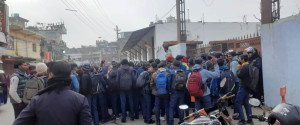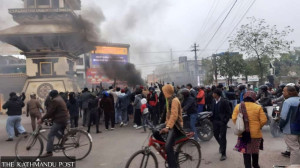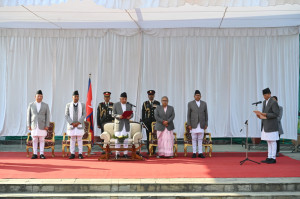National
Scorching heat forces school closures across Tarai
Monsoon stalls despite early onset, triggering excessive heat in many places. Students faint in classes. Met officials say monsoon progress is likely starting next week.
Post Report
After students began fainting in classrooms due to intense heat, local governments in Tarai districts have started shutting down schools and colleges.
Metropolitan cities—Biratnagar and Bharatpur—and sub-metropolitan cities Janakpur and Nepalgunj have ordered all schools and colleges to suspend classes with immediate effect.
Some other local units in the Tarai have followed suit, citing growing health risks to students from the relentless heat.
Bharatpur Metropolitan City, which has ordered schools to stop classes until Friday, said classes may resume if rainfall occurs and temperatures decline. The metropolis has also asked parents not to let their children leave home in the afternoon or swim in the rivers and ponds.
Biratnagar Metropolitan City has announced a similar shutdown until Friday.
Nepalgunj Sub-metropolitan City has gone further and ordered a weeklong closure of schools and academic institutions.
Schools in Janakpur have been closed for two days due to the ongoing heatwave that has gripped the region since last week.
On Tuesday, 20 students at Ram Prasad Secondary School in ward 2 of Sabaila Municipality in Dhanusha, fainted in their classrooms due to extreme heat. Three of them were hospitalised, but all have since returned home after receiving treatment.
Following the incident, Sabaila Municipality also decided to close schools in the area.
Although the monsoon arrived early this year, on May 29, around two weeks ahead of the usual onset date of June 13, it has stalled since entering eastern Nepal. With the rains failing to progress westwards, much of the country, including the hills and the Tarai, has experienced a sharp rise in temperatures, pushing some areas into near heatwave conditions.
Locals in the Tarai region complain of the scorching sun and hot and dry winds from early morning, which have severely disrupted daily life.
Meteorologists say rainfall is likely in many places from Wednesday evening, which could bring some respite.
“Rainfall is expected from tomorrow onwards, and we hope that monsoon will gradually advance to other provinces from Koshi province,” said Hari Prasad Dahal, a meteorologist at the division. “Although temperatures have risen in many places across the country, they haven’t yet met the official threshold for declaring heat wave conditions.”
The Department of Hydrology and Meteorology has forecast above-normal rainfall this monsoon. This has sparked optimism for better crop yields and a much-needed lift for the country’s struggling economy.
But the forecast also comes with a warning. Above-normal rains could spell more disasters, including flash floods and landslides.
However, some parts in the north, south, east, and northeast of South Asia may experience normal to below-normal rainfall.
This year, the National Disaster Risk Reduction and Management Authority (NDRRMA) has predicted that around two million (19,97,731) people from 4,57145 households could be affected by monsoon-related disasters. As the Met Department has forecast above-normal rainfall in most parts of the country, the NDRRMA anticipates a higher risk of floods, landslides, inundation, excessive rain, land erosion, and flash floods.
Nepal is one of the world’s most vulnerable countries to the climate crisis and has witnessed extreme weather events over the past decade and a half. The weather has turned more unusual and destructive in the past couple of years.
Evidence suggests that the maximum temperature in Nepal is rising at a greater rate (0.056 degrees Celsius per year) than the global average of 0.03 degrees Celsius per year.
Experts say extreme weather events—excess rainfall in a short period, continuous rains for several days after the monsoon, dry spells, droughts, below-average precipitation, and above-normal winter temperatures—have become more frequent in Nepal. They have asked authorities concerned to start preparation for the worst case scenario of monsoon disasters.




 6°C Kathmandu
6°C Kathmandu


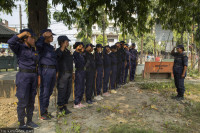

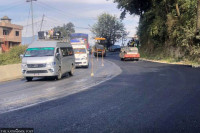

%20(1).jpg&w=300&height=200)
